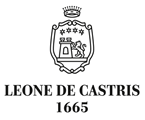エステート
ここでは、私たちの主なブドウ畑をご紹介します。土着品種(ネグロアマーロ、プリミティーボ、マルヴァジア·ネーラ、ヴェルデーカ、アレアティコ、マルヴァジア·ビアンカ、ビアンコ·ダレッサーノ、モスカート、ススマニエッロ、オッタヴィアネッロ)と、国際品種(シャルドネ、ソーヴィニョン·ブラン、シラー)を栽培しています。
プーリア特有の色や形をしているブドウ畑やオリーブ畑を、私たちは何世紀にもわたり守り続けています。風景を尊重し、人間と自然の生き生きとした調和を表現しています。
1600年代にはおよそ5000ヘクタールあった農場は、1950年代初頭まではまだ2000ヘクタールを超える面積を維持していました。今では350ヘクタールを所有し、約半分はブドウ畑として、残りの半分は、オリーブ畑、農園、牧畜に使われ、レッチェ、ブリンディシ、バリ、ターラント県にまたがっています。
ウルシ、マイアナ、ドン·ニコレッタ、メッセーレ·アンドレアといった農園は、何世紀にもわたり家族に所有されてきました。また、比較的新しい農園や、何百年前から所有されている農園(カーザ·プルカラ、トロイリ、カレット、など)があります。相続による分割と、土地再形成などにより、第二次世界大戦後に拡大はストップされましたが、吸収や合併は現在も続いています。
Cagnazzi
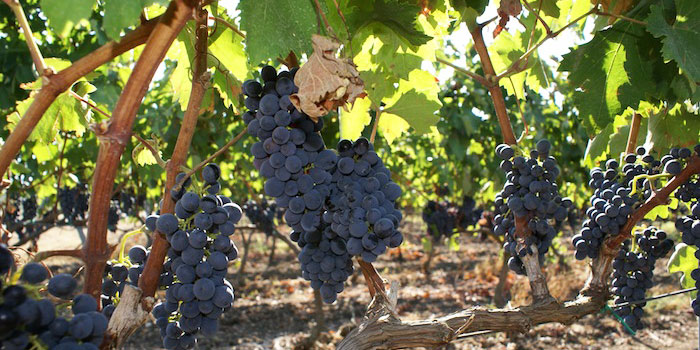
Ottavianello
Ottavianello is an ancient grape variety from Puglia. Its origins are uncertain: it seems likely that it was imported to San Vito dei Normanni in the Brindisi province by the Marquis of Bugnano from the town of Ottaviano near Naples. Hence the name Ottavianello. Cultivation of Ottavianello has been increasingly abandoned in recent decades by viticulturists in Puglia. Aware of the great potential of this grape variety, we decided to make the most of it by using Ottavianello grapes to produce one of our leading reds. Ottavianello is characterised by its abundant productivity. Bountiful productivity, the balance of which must be maintained in order to produce wines of a refined quality. The wine obtained from this noble grape variety is characterised by its rather pale ruby red colour, aromas of bottled sour cherries and floral notes of violet, and its pleasant, balanced taste.
Case Alte
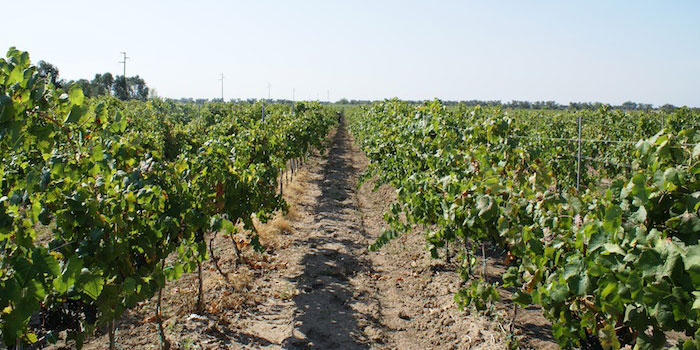
Sauvignon Blanc
Sauvignon Blanc originates from the Bordeaux region.
The name derives from the French word “sauvage”. Generally, Sauvignon Blanc buds late and ripens early, meaning that it is perfectly suited to areas with a sunny but not overly warm climate.
Currently grown in all of the world’s leading wine-producing regions, the white Sauvignon grape produces some of the best white wines. Its fermentation in stainless steel containers enables it to retain its characteristic dry notes, aromatic and fresh, which makes such wines instantly recognisable.
Cinque Rose
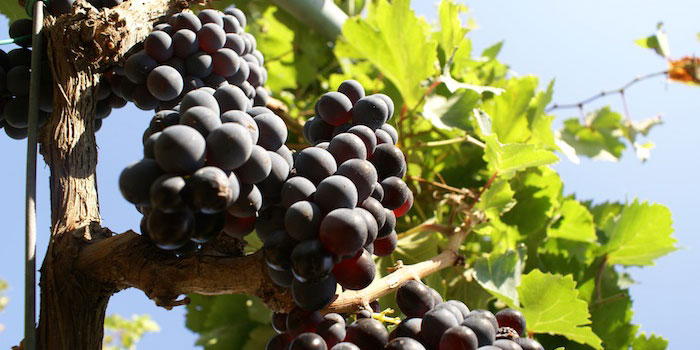
Malvasia nera
Malvasia nera from Lecce is part of the Malvasia family, a group of grape varieties, including Brindisi and Basilicata Malvasia, that share certain characteristics.
Malvasia grapes are generally grown alongside Negroamaro, and are blended with these in winemaking to provide alcohol content, richness and body to the wine.
As a monovarietal, this grape produces a very elegant wine, with harmonious aromas, light in tannins and suitable for immediate consumption.
Don Francesco
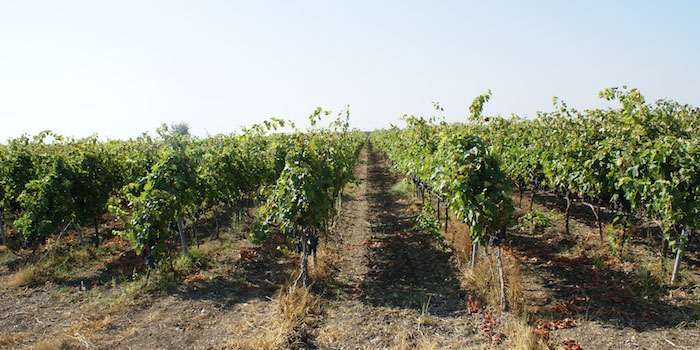
Aleatico
The Aleatico has ancient origins and almost certainly owes its arrival in Italy and subsequent prevalence in Lazio, Tuscany and Puglia (and particularly in the Salento area and the province of Bari) to the Greeks. This grape is closely related to Moscato which, precisely because of its distinctive aroma and flavour, is also consumed in small quantities as a table grape.
In recent years, Aleatico has drawn renewed attention for its specific qualities and characteristics.
Vinification of these grapes produces wines with a brilliant ruby colour, violet hues, a velvety and elegant aroma, delicious fragrance and a taste characterised by lively and fresh fruity overtones.
Donna Lisa
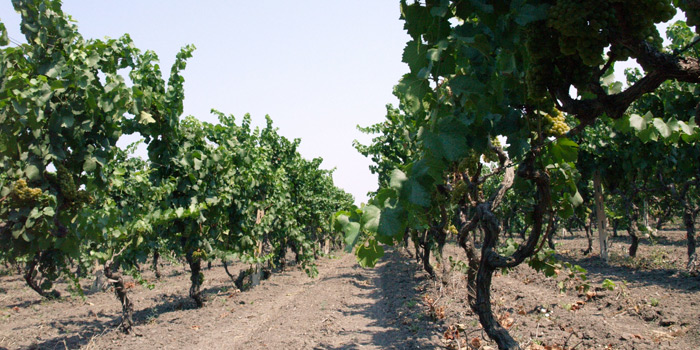
Negroamaro
Of unknown origin, the Negroamaro grape may have originally grown on the coasts of Puglia, or may have been brought here by the Greeks. Today they are most commonly found in the Lecce and Brindisi provinces. Various theories have been proposed regarding the etymological meaning of the name. Some believe that it originates from the dark colour of the resulting wines and their characteristic slightly bitter taste, but the more persuasive hypothesis suggests that the term Negroamaro derives from the words “niger” (Latin) and “maru” (Ancient Greek) both of which mean “black”. These grapes produce a wine with an impenetrable ruby red colour; the aroma is intense and spicy with a hint of cherry and red fruit jam and a characteristically bitter taste.
The significance of the Negroamaro grape variety is attested to by the fact that the Puglia DOC group (such as Salice Salentino Doc) to which it belongs has by now gained firm recognition.
Don Nicoletta
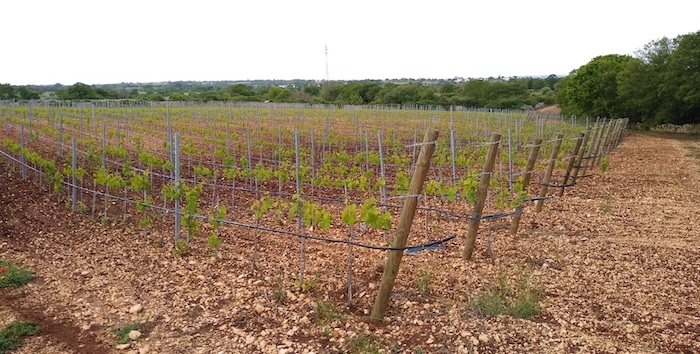
Coratina, ogliarola e cellina
Coratina, named after Corato, its town of origin, is one of the most sought after cultivars in the South of Italy due to the organoleptic and nutritional properties of the oil that it produces. Its pleasant taste profile is exalted when made into extra virgin olive oil. Coratina provides the backdrop to our Don Nicoletta estate in Noci.
Larena
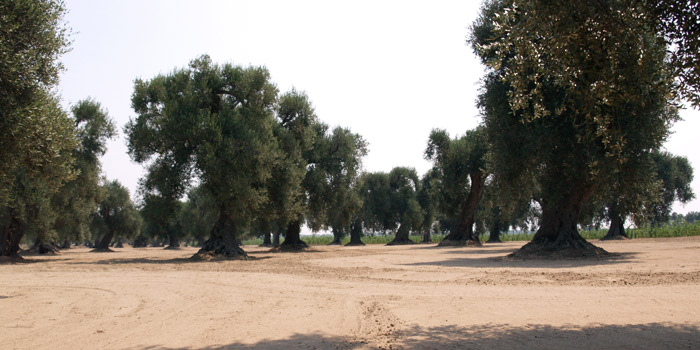
CELLINA-OGLIAROLA
“Cellina di Nardò” and “l’Ogliarola di Lecce” are the main cultivars grown in the Salento region. They both have ancient origins: Cellina was introduced to Salento by the Saracens between the 8th and 9th centuries A.D., while Ogliarola appears to date back even further – indeed it has been identified as the “Salentina” referred to by Cato in 200 B.C. When blended and made into extra virgin olive oil they produce fruity oils, which are lightly bitter with pleasant almond overtones.
We grow Cellina and Ogliarola in the La Rena estate in Salice Salentino.
Ursi
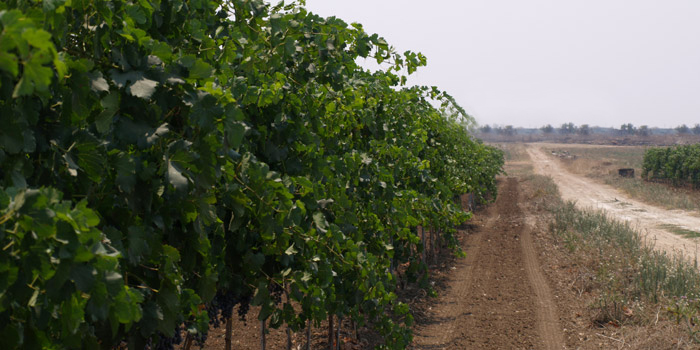
Fiano
It is believed to have originated in the Lapio municipality, East of Avellino. Its presence in Puglia dates back to the 12th century, thanks to Charles II of Anjou who wanted Fiano planted in the royal vineyards in Puglia.
The pedoclimatic conditions in Salento are well-suited to Fiano, allowing it to acclimatise perfectly while retaining its specific and original characteristics. So much so that it is considered today to be one of the white grape varieties that best represents Puglia.
Wine produced using Fiano grapes is characterised by an intense straw-yellow colour, releasing fruity and floral notes on the nose, with a good structure on the palate and rich in flavour.
Lemos
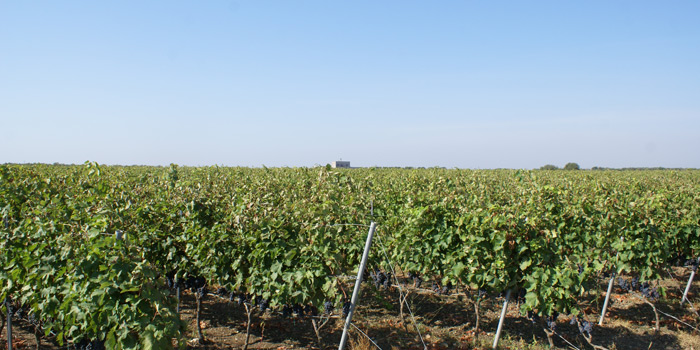
Syrah
Syrah or Shiraz is one of the so-called “international” grapes. The origin of Syrah is rather uncertain, but it seems to have come from the Middle East. In any case, this grape was already being grown and made into wines in the Rhône Valley during the Roman Empire. This region of France is still the leading area for such wines today, and boasts the longest tradition. The history of Syrah in Australia is more recent, probably dating back to 1800 when a number of specimens were introduced into the country. This was followed by the subsequent customisation of both the name, to Shiraz, and the style of winemaking (as a monovarietal in France, whereas in Australia it is often blended with Cabernet Sauvignon). Today, the Australian characteristics are almost better known than those of the original Rhône Valley wines. The colour of wines produced from Syrah grapes is greatly influenced by the degree of ripeness of the grape and by the yield. Rather dark and intense if originating from low yield harvests, it tends to be pale and almost transparent if it is the product of an excessive yield. When Syrah is produced according to quality standards, the red colour of the wine is almost impenetrable. Like other red wines produced using grapes rich in pigment, the violet hues of young Syrah transform into garnet through ageing, which is performed for up to 15 years. The aromatic composition of Syrah is quite rich and very sensitive to the overall terroir conditions. Syrahs produced in Europe are generally characterised by a black pepper aroma, whereas overtones of ripe fruit and jams are prevalent in the New World wines. Furthermore, due to barrel ageing, the impact of the toasting of the wood is more perceptible in Syrah produced using ripe grapes than that produced using grapes that are not fully ripe. The development of the aromatic complexity becomes even more interesting with bottle ageing. As such, the difference between the French and Australian wines is also perceptible in the taste. French Syrahs are more elegant, though robust, rounded and less tannic. In Australia, a denser, more full-bodied and concentrated style is preferred.
Maiana
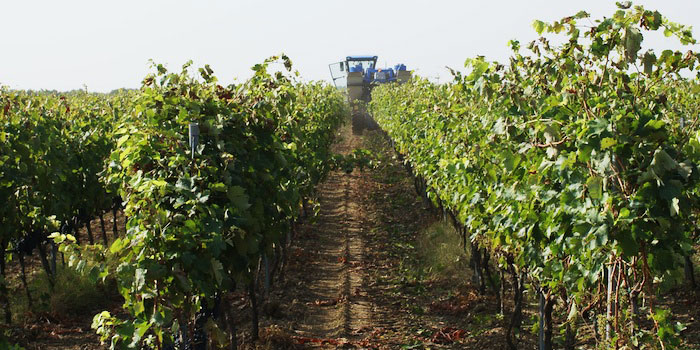
Chardonnay
Many believe that the origins of Chardonnay are unknown. Some scholars suggest that it originated in the Middle East, while others claim that these grapes are the result of the spontaneous hybridisation of an already domesticated grape (probably Pinot) and an Illyrian grape variety (from such areas as Slovenia, Croatia, Bosnia, Montenegro and Albania).
The Burgundy region, and specifically the municipality of the same name, can, however, be pinpointed as the native land and of Chardonnay, and the place where it is officially grown.
Many consider it to be the single grape variety that produces the area’s best wines. It is like a brand name recognised across the world, and is used to produce monovarietals or combined with other grapes. As such, it is found in blends and also in grape mixes. Approximately 11,800 hectares of land is dedicated to growing Chardonnay grapes in Italy.
Messere Andrea
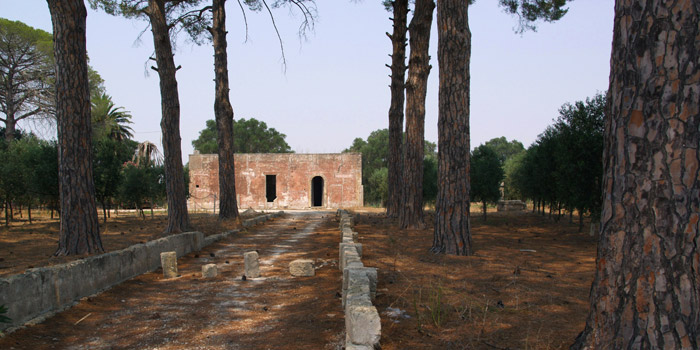
Susumaniello
Susumaniello is one of the indigenous grape varieties that has returned to favour in recent years, thanks to the interest of organisations, institutes and groups of producers (including our company, which is a partner in the Vinum Loci project).
Susumaniello is a grape variety that probably comes from the Dalmatia region, and it owes its name to the fact that it is particularly productive at a young age, meaning that its shoots are loaded like a “somaro” [donkey].
Until approximately twenty years ago, Susumaniello was reasonably common in the province of Brindisi, but two factors led to its definitive disappearance in recent years. The main reason is closely linked to the drastic drop in productivity levels typical of the mature phase of this grape variety – after about 10 years.
The second, instead, relates to the progressive downturn in demand for sweet filtered products, which was the primary use of these grapes in the past.
Experiments have recently been performed to produce a monovarietal from this grape, which seem to have delivered positive results, while Susumaniello has proven to be perfectly compatible with Negroamaro in blends. The wine produced has a very full-bodied and robust structure and a deep ruby colour; the aromas emerge fully after being left to breathe for a long period, giving way to a complex and varied bouquet. The sensation on the palate is one of great depth on initial impact, but it loses its more acute notes over time, giving way to more delicate, lingering notes.
Pizzinichi
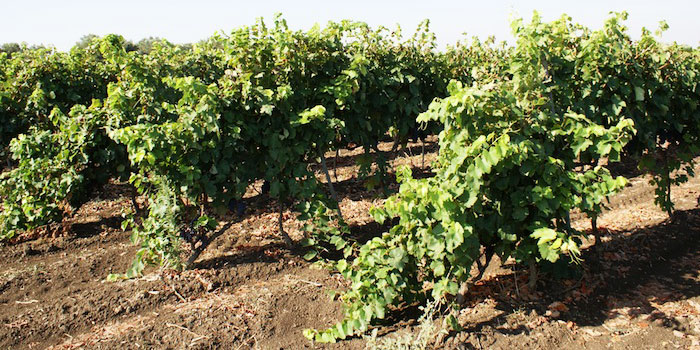
Moscato
This is one of the world’s most ancient varieties. It was grown by the Greeks under the name “Anathelicon moschaton” and by the Romans under the name “uva apiana” [grape of the bees], due to its super-sweet aroma which attracts bees. The name may also derive from “muscum” (musk), related to “musqué”, the term used by the French to define its typical strong aroma.
Another possibility is that Moscato was imported to Italy from the Middle East at the end of the Crusades. The oldest records date back to the 1300s when local cultivation began, but more regular production began around 1500, and the grape variety began to feature in Italian winemaking in the 1800s. White Moscato is present more or less across the Italian peninsula, with various characteristics and names. As well as being used in winemaking, Moscato – like all particularly aromatic grape varieties – is also a fantastic table grape. It is excellent both as a sparkling wine (yellow with green tones and intense aromas), and as a sweet wine, obtained from the partial drying of the grapes prior to vinification, and characterised by aromas that are reminiscent of dry fig jam and candied fruit.
Priesti
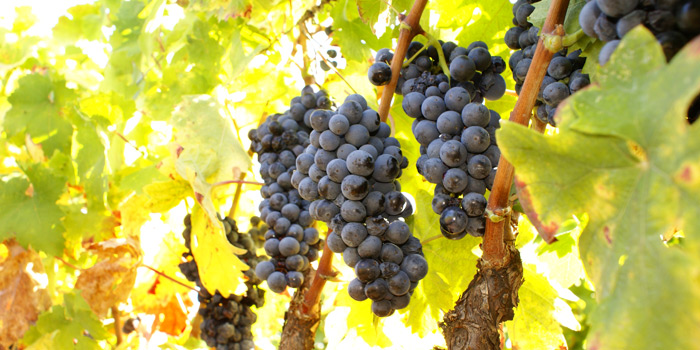
Negroamaro
Of unknown origin, the Negroamaro grape may have originally grown on the coasts of Puglia, or may have been brought here by the Greeks. Today they are most commonly found in the Lecce and Brindisi provinces. Various theories have been proposed regarding the etymological meaning of the name. Some believe that it originates from the dark colour of the resulting wines and their characteristic slightly bitter taste, but the more persuasive hypothesis suggests that the term Negroamaro derives from the words “niger” (Latin) and “maru” (Ancient Greek) both of which mean “black”. These grapes produce a wine with an impenetrable ruby red colour; the aroma is intense and spicy with a hint of cherry and red fruit jam and a characteristically bitter taste.
The significance of the Negroamaro grape variety is attested to by the fact that the Puglia DOC group (such as Salice Salentino Doc) to which it belongs has by now gained firm recognition.
Rena
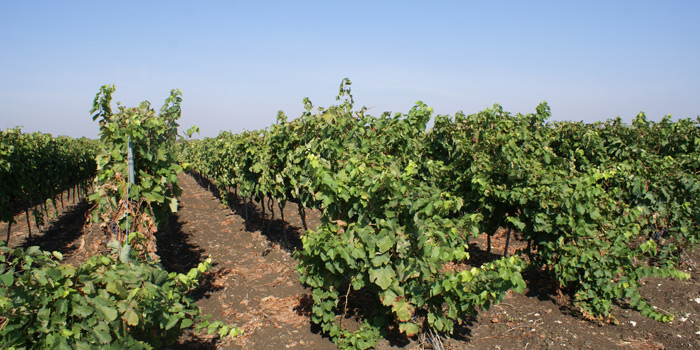
Chardonnay
Many believe that the origins of Chardonnay are unknown. Some scholars suggest that it originated in the Middle East, while others claim that these grapes are the result of the spontaneous hybridisation of an already domesticated grape (probably Pinot) and an Illyrian grape variety (from such areas as Slovenia, Croatia, Bosnia, Montenegro and Albania).
The Burgundy region, and specifically the municipality of the same name, can, however, be pinpointed as the native land and of Chardonnay, and the place where it is officially grown.
Many consider it to be the single grape variety that produces the area’s best wines. It is like a brand name recognised across the world, and is used to produce monovarietals or combined with other grapes. As such, it is found in blends and also in grape mixes. Approximately 11,800 hectares of land is dedicated to growing Chardonnay grapes in Italy.
Santera
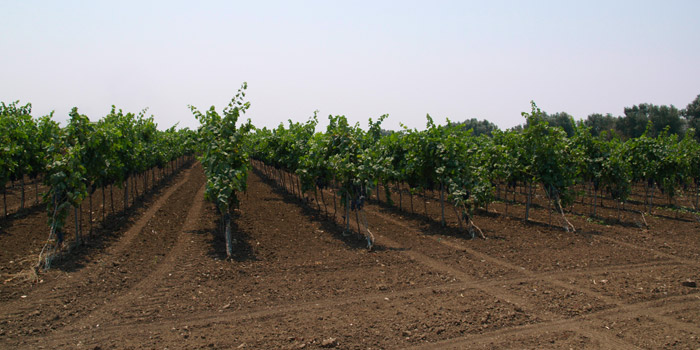
Primitivo
Primitivo became extremely common throughout the Salento area towards the end of the 1800s.
Primitivo is a grape variety that originated in Gioia del Colle, in the province of Bari, but the best known variety is grown in the Lecce, Brindisi and Taranto areas, and is famous and appreciated throughout the world.
Tresca
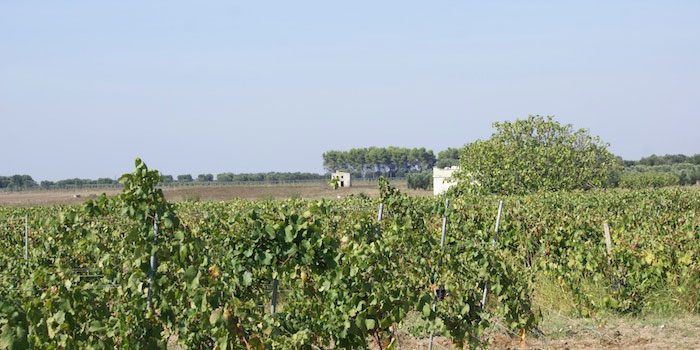
Malvasia Bianca
Malvasia is a variety that belongs to a very large and heterogeneous family, and as such it is widespread across the country, though in many cases the different types only really resemble each other in name.
The element that most frequently differentiates them is their aromatic profile; indeed Malvasia includes particularly aromatic versions such as Candia, and those that are less intense from an aromatic perspective, but more full-bodied and richer in flavour, such as those found in the Salento area.
It is presumed that the name Malvasia originates from the Greek city “Monemvasia” in the Peloponnese region, the name of which means “port with only one entrance”. The term Malvasia seems to have been coined, through assonance, by the Venetians who sold this esteemed wine from the Peloponnese region.
For far too long Malvasia Bianca was regarded as a grape that was only suitable for producing young white wines. Research carried out by our company, however, has shown that the levels of catechins found in this grape variety make it suitable for bottle ageing for up to a number of years. Donna Lisa Bianco “Malvasia” is the product of such experience, and seeks to further consolidate our connection with the Salento area.
